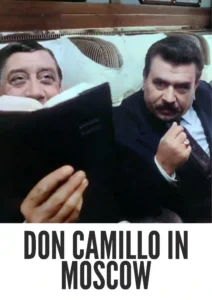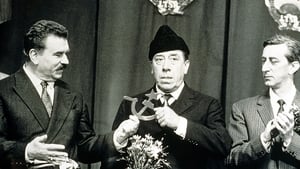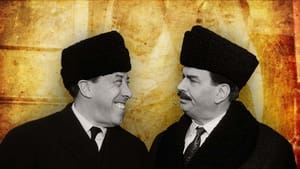Video Sources 0 Views

Synopsis

Get ready for a hilarious culture clash with Don Camillo in Moscow, the fifth installment in the beloved Don Camillo series, now beautifully colorized for a viewing experience that’s both nostalgic and fresh. Directed by Luigi Comencini and starring the iconic duo of Fernandel and Gino Cervi, this film takes the spirited rivalry between a Catholic priest and a Communist mayor to the heart of the Soviet Union. This HD download promises plenty of laughs, heartwarming moments, and a unique look at the Cold War era through the lens of Italian comedy. Also known as Il Compagno Don Camillo or Don Camillo en Russie, this movie is a must-see for fans of classic comedies.
Don Camillo in Moscow follows the story of Peppone, the Communist mayor, as he receives a tractor as a gift from a Soviet collective farm. Inspired by this gesture, Peppone plans to twin his town of Brescello with the Soviet village. To prevent this, Don Camillo schemes to sabotage the mayor’s plans.
Through a series of clever maneuvers, Don Camillo manages to trick Peppone into including him in the delegation traveling to Moscow, using forged papers and a false identity to pass through the Iron Curtain. Only Peppone and his comrades from Brescello know Don Camillo’s true identity.
During their stay in the Soviet Union, Don Camillo and Peppone encounter a series of comical situations that highlight the political contradictions of the Soviet system while also showcasing the everyday lives of ordinary Russian people. Their journey is filled with humorous misunderstandings, cultural clashes, and unexpected friendships, ultimately revealing the shared humanity that transcends ideological divides.
The film features a stellar cast, bringing these beloved characters to life:
-
Fernandel as Don Camillo
-
Gino Cervi as Giuseppe “Peppone” Bottazzi
-
Leda Gloria as Maria Bottazzi
-
Gianni Garko as Scamoggia
-
Graziella Granata as Nadia
Don Camillo in Moscow is a classic comedy that blends humor with social commentary, offering a lighthearted yet insightful look at the Cold War era. It is a prime example of Italian comedy at its finest.
Released in 1965, Don Camillo in Moscow reflects the cultural and political climate of the Cold War era. The film uses humor to explore the ideological differences between communism and capitalism, while also highlighting the shared human experiences that unite people across political divides. Don Camillo in Moscow stands as a testament to the power of comedy to bridge cultural gaps and promote understanding.
This colorized version of Don Camillo in Moscow has been carefully restored using modern digital techniques, enhancing the visual appeal while preserving the film’s original charm and atmosphere. The colorization process involved analyzing the grayscale tones of the original black and white footage and assigning appropriate colors to each scene. This process brings new life to the characters and settings.
-
: Luigi Comencini
-
: Piero De Bernardi, Leo Benvenuti
-
: Don Camillo by Giovannino Guareschi
-
: Armando Nannuzzi
-
: Nino Baragli
-
: Rizzoli Film, Francoriz Productions, Omnia Films
-
: Cinédis
-
: 109 minutes
-
: MP4
-
: HD (1080p)
-
: Compatible with most devices, including smartphones, tablets, computers, and smart TVs.
Don Camillo in Moscow (1965) is celebrated for its humor, its heartwarming story, and its memorable performances by Fernandel and Gino Cervi. It remains a beloved classic, enjoyed by audiences of all ages.
-
: What is Don Camillo in Moscow about?
-
A: Don Camillo in Moscow is a comedy about a priest who travels to the Soviet Union with his Communist rival, leading to a series of hilarious cultural clashes.
-
-
: Is Don Camillo in Moscow (1965) a well-known film?
-
A: Yes, Don Camillo in Moscow is a popular film in the Don Camillo series, known for its humor and its exploration of Cold War themes.
-
-
: Is this version of Don Camillo in Moscow colorized?
-
A: Yes, this version has been professionally colorized to enhance the viewing experience.
-
-
: What makes Don Camillo in Moscow interesting for classic film fans?
-
A: Don Camillo in Moscow offers a unique blend of Italian humor and Cold War satire, showcasing the talents of Fernandel and Gino Cervi.
-
-
: What is the download format?
-
A: The download format is MP4, which is compatible with most devices.
-
-
: What resolution is the download?
-
A: The resolution is HD (1080p), providing a high-quality viewing experience.
-
Watch Don Camillo in Moscow Today!













